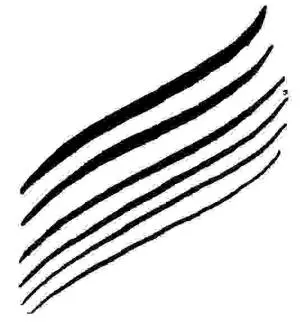Christopher Whall - Stained Glass Work - A text-book for students and workers in glass
Здесь есть возможность читать онлайн «Christopher Whall - Stained Glass Work - A text-book for students and workers in glass» — ознакомительный отрывок электронной книги совершенно бесплатно, а после прочтения отрывка купить полную версию. В некоторых случаях можно слушать аудио, скачать через торрент в формате fb2 и присутствует краткое содержание. Жанр: foreign_antique, foreign_home, visual_arts, на английском языке. Описание произведения, (предисловие) а так же отзывы посетителей доступны на портале библиотеки ЛибКат.
- Название:Stained Glass Work: A text-book for students and workers in glass
- Автор:
- Жанр:
- Год:неизвестен
- ISBN:нет данных
- Рейтинг книги:3 / 5. Голосов: 1
-
Избранное:Добавить в избранное
- Отзывы:
-
Ваша оценка:
- 60
- 1
- 2
- 3
- 4
- 5
Stained Glass Work: A text-book for students and workers in glass: краткое содержание, описание и аннотация
Предлагаем к чтению аннотацию, описание, краткое содержание или предисловие (зависит от того, что написал сам автор книги «Stained Glass Work: A text-book for students and workers in glass»). Если вы не нашли необходимую информацию о книге — напишите в комментариях, мы постараемся отыскать её.
Stained Glass Work: A text-book for students and workers in glass — читать онлайн ознакомительный отрывок
Ниже представлен текст книги, разбитый по страницам. Система сохранения места последней прочитанной страницы, позволяет с удобством читать онлайн бесплатно книгу «Stained Glass Work: A text-book for students and workers in glass», без необходимости каждый раз заново искать на чём Вы остановились. Поставьте закладку, и сможете в любой момент перейти на страницу, на которой закончили чтение.
Интервал:
Закладка:
I shall now leave this subject of cutting for the present, and describe, up to about the same point, the processes of painting, taking both on to a higher stage later—as if, in fact, I were teaching a pupil; for as soon as you can cut glass well enough to cut a piece to paint on, you should learn to paint on it, and carry the two things on step by step, side by side.
CHAPTER III
Painting (elementary)—Pigments—Mixing—How to Fill the Brush—Outline—Examples—Industry—The Needle and Stick—Completing the Outline.
The pigments for painting on glass are powders, being the oxides of various minerals, chiefly iron. There are others; but take it thus—that the iron oxide is a red pigment, and the others are introduced, mainly, to modify this. The red pigment is the best to use, and goes off less in the firing; but, alas! it is a detestably ugly colour , like red lead; and, do what you will, you cannot use it on white glass. Against clear sky it looks pretty well in some lights, but get it in a sidelight, or at an angle, and the whole window looks like red brick; while, seen against any background except clear sky, it always looks so from all points of view. There are various makers of these pigments. Some glass-painters make their own, and a beginner with any knowledge of chemistry would be wise to work in that direction.
I need not discuss the various kinds of pigment; what follows is a description of my own practice in the matter.
To Mix the Pigment for Painting. —Take a teaspoonful of red tracing-colour, and a rather smaller spoonful of intense black, put them on a slab of thick ground-glass about 9 inches square, and drop clean water upon them till you can work them up into a paste with the palette-knife (fig. 18); work them up for a minute or so, till the paste is smooth and the lumps broken up, and then add about three drops of strong gum made from the purest white gum-arabic dissolved in cold water. Any good chemist will sell this, but its purity is a matter of great importance, for you want the maximum of adhesiveness with the minimum of the material.
Mix the colour well up with the knife; then take one of those long-haired sable brushes, which are called "riggers" (fig. 19), and which all artists'-colourmen sell, and fill it with the colour, diluting it with enough water to make it quite thin. Do not dilute all the pigment; keep most of it in a tidy lump, merely moist, as you ground it and not further wetted, at the corner of your slab; but always keep a portion diluted in a small "pond" in the middle of your palette.

Fig. 18.
How to Fill the Brush with Pigment. —Now you must note that this is a heavy powder floating free in water, therefore it quickly sinks to the bottom of your little "pond." Each time you fill your brush you must "stir up the mud ," for the "mud" is what you want to get in your brush, and not only so, but you want to get your brush evenly full of it from tip to base, therefore you must splay out the hairs flat against the glass, till all are wet, and then in taking it off the palette, "twiddle" it to a point quickly. This takes long to describe, but it does not take a couple of seconds to do. You must have the patience to spend so much pains on it, and even to fill the brush very often, nearly for each touch; then you will get a clear, smooth, manageable stroke for your outline, and save time in the end.
Fig. 19.
How to Paint in Outline. —Make some strokes (fig. 20) on a piece of glass and let them dry; some people like them to stick very tight to the glass, some so that a touch of the finger removes them; you must find which suits you by-and-by, and vary the amount of gum accordingly; but to begin, I would advise that they should be just removable by a moderately hard rub with the finger, rather less hard a rub than you close a gummed envelope with.
Practise now for a time the making of strokes, large and small, dark and light, broad and fine; and when you have got command of your tools, set yourself the task of doing the same thing, copying an example placed underneath your bit of glass . You will find a hand-rest (fig. 21) an assistance in this.

Fig. 20.
It is difficult to give any list of examples suitable for this stage of glass, but the kind of line employed on the best heraldry is always good for the purpose. The splendid illustrations of this in Mr. St. John-Hope's book of the stall-plates of the Knights of the Garter at Windsor, examples of which by the author's courtesy I am allowed to reproduce (figs. 22-22A), are ideal for bold outline-work, and fascinatingly interesting for their own sake. In most of these there is not only excellent practice in outline , and a great deal of it, but, mixed with it, practice also in flat washes, which it is a good thing to be learning side by side with the other.
Fig. 21.
And here let me note that there are throughout the practice of glass-painting many methods in use at every stage. Each person, each firm of glass-stainers, has his own methods and traditions. I shall not trouble to notice all these as we come to them, but describe what seems to me to be the best practice in each case; but I shall here and there give a word about others.
For instance: if you use sugar or treacle instead of gum, you get a rather smoother-working pigment, and after it is dry you can moisten it as often as you will for further work by merely breathing on the surface; and perhaps if your aim is outline only , it may be well to try it; but if you wish to pass shading-colour over it you must use gum, for you cannot do so over treacle colour; nor do I think treacle serves so well for the next process I am to describe, which here follows.

Fig. 22.

Fig. 22a.
How to complete the Outline better than you possibly can by One Tracing. —When you take up a bit of glass from the table, after having done all you can to make a correct tracing, you will be disappointed with the result. It will have looked pretty well on the table with the copy showing behind it and hiding its defects, but it is a different thing when held up to the searching daylight. This must not, however, discourage you. No one, not the most skilful, could expect to make a perfect copy of an original (if that original had any fineness of line or sensitiveness of touch about it) by merely tracing it downwards on the bench. You must put it upright against the daylight, and mend your drawing, freehand, faithfully by the copy.
These remarks do not, in a great degree, apply to the case of hard outlines specially prepared for literal translation. I am speaking of those where the outline is, in the artistic sense, sensitive and refined, as in a Botticelli painting or a Holbein drawing, and to copy these well you want an easel.
For this small work any kind of frame with a sheet of glass in it, and a ledge to rest your bit of glass on and a leg to stand out behind, will do, and by all means get it made (fig. 23); but do not spend too much on it, for later on you will want a bigger and more complicated thing, which will be described in its proper place—that is to say, when we come to it; and we shallcome to it when we come to deal with work made up of a number of pieces of glass, as all windows must be.
Читать дальшеИнтервал:
Закладка:
Похожие книги на «Stained Glass Work: A text-book for students and workers in glass»
Представляем Вашему вниманию похожие книги на «Stained Glass Work: A text-book for students and workers in glass» списком для выбора. Мы отобрали схожую по названию и смыслу литературу в надежде предоставить читателям больше вариантов отыскать новые, интересные, ещё непрочитанные произведения.
Обсуждение, отзывы о книге «Stained Glass Work: A text-book for students and workers in glass» и просто собственные мнения читателей. Оставьте ваши комментарии, напишите, что Вы думаете о произведении, его смысле или главных героях. Укажите что конкретно понравилось, а что нет, и почему Вы так считаете.












